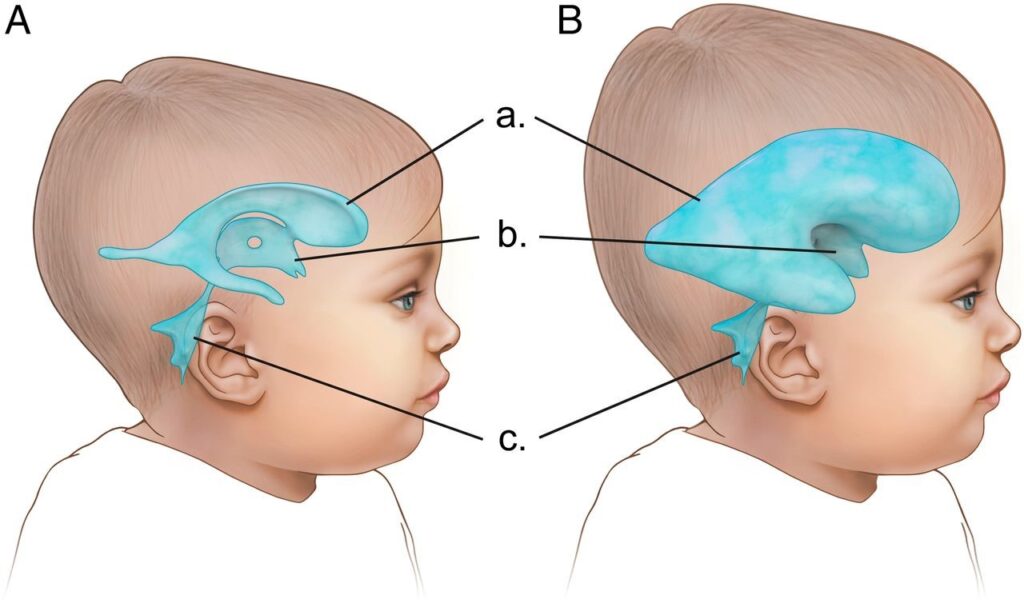Introduction:
At Physio Needs Academy, we understand the importance of compassionate care and comprehensive physiotherapy for individuals affected by hydrocephalus. Hydrocephalus is a condition characterized by the accumulation of cerebrospinal fluid in the brain, leading to increased pressure inside the skull. We are committed to providing information and support to those facing this condition and offering physiotherapy guidance for a better quality of life.
Understanding Hydrocephalus:
Hydrocephalus can be caused by various factors, including congenital issues and acquired conditions such as meningitis, brain tumors, traumatic brain injuries, intraventricular hemorrhage, or subarachnoid hemorrhage. Recognizing the signs and symptoms of hydrocephalus is crucial for early diagnosis and intervention.
Signs and Symptoms:
Hydrocephalus can manifest differently depending on factors such as age and the underlying cause. Common symptoms may include headaches, nausea, vomiting, sleepiness, and papilledema. Children with hydrocephalus may display symptoms like a bulging fontanelle, irritability, seizures, or changes in head size. In older children and adults, symptoms can range from personality changes, hearing difficulties, to coordination problems.
Causes:
The causes of hydrocephalus can be categorized into congenital and acquired factors. Congenital causes often relate to issues in fetal development, while acquired causes result from conditions like meningitis, tumors, or head trauma. Understanding the underlying cause is vital for effective management.
Types:
Hydrocephalus can be classified as communicating or non-communicating (obstructive). Communicating hydrocephalus involves impaired cerebrospinal fluid reabsorption without obstruction, while non-communicating hydrocephalus results from CSF flow obstructions.
Normal Pressure Hydrocephalus:
In some cases, hydrocephalus may occur in adults without elevated intracranial pressure, leading to symptoms such as gait instability, urinary incontinence, and dementia. Early recognition of these symptoms is essential for timely intervention.
Diagnosis:
Diagnosing hydrocephalus involves physical exams and imaging tests such as ultrasounds, MRIs, and CT scans. Early diagnosis is critical to prevent further complications.
Treatment:
Hydrocephalus is primarily treated through surgical options, including shunt insertion or endoscopic third ventriculostomy (ETV). Shunts redirect excess cerebrospinal fluid, while ETV improves CSF flow. Regular medical checkups and monitoring are essential for shunt function.
Rehabilitation and Physiotherapy:
Physiotherapy plays a crucial role in the rehabilitation of individuals with hydrocephalus. Physiotherapists focus on improving motor skills, coordination, and functional abilities through various techniques, including therapeutic exercises, manual therapies, and modalities.
Physiotherapy Goals:
- Enhancing functional skills and reducing secondary impairments.
- Improving motor control, learning, and development.
- Encouraging problem-solving skills and task-oriented training.
- Promoting physical milestones, mobility, balance, and coordination.
- Stretching tight muscles and strengthening weak ones.
- Enhancing quality of life and confidence.
- Improving endurance and exercise tolerance.
Conclusion:
At Physio Needs Academy, we are committed to providing compassionate care and physiotherapy support for individuals living with hydrocephalus. Our holistic approach aims to improve the quality of life for those affected by this condition. By addressing both physical and emotional needs, we empower individuals to lead fulfilling lives while managing the challenges of hydrocephalus. Early diagnosis, timely treatment, and rehabilitation are key to a brighter future for those living with hydrocephalus.

